Dear blog reader,
I first met our next guest contributor, Dr. Ramon Marin, back in early 2019 when I visited Prof. Julio de Rose’s lab at the Federal University of São Carlos (UFSCar) as part of a month-long research stay I was undertaking during my PhD. Ramon was nearing the end of his Masters degree at the time if I am not mistaken, and he was one of the first people I came into contact with at the lab. He was immediately warm and welcoming, which was a huge relief given how far away I was from home. But more than that, his passion, excitement and genuine curiosity for Behavior Analysis were palpable. Five years later, Ramon has completed his PhD, and that passion, excitement and curiosity are as strong as ever. I think it’s in large part these characteristics that contribute to him being one of those people that you just know are doing exactly what they should be doing and are going to contribute something meaningful doing it. So, having gotten through his doctoral training and lived to tell the tale, I invited Ramon to reflect on his journey so far as a young academic. In doing so, Ramon talks through some of the things that he feels were particularly important in cultivating him as a young researcher and his passion for the discipline. Sometimes this cultivation came from perhaps some unlikely places (e.g., working with folks in dentistry), but I think these details in particular show the importance of never closing ourselves off to cooperation and collaboration in all of its forms, and the fruits of such an outlook. Anyway, enough out of me – keep scrolling and enjoy another fantastic contribution to the series!
Colin
Author the author:
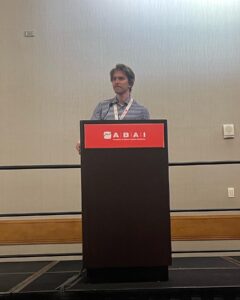 Dr. Ramon Marin received his undergraduate degree from the Methodist University of Piracicaba (Brazil), before completing both his Masters and Ph.D. in Psychology from the Federal University of São Carlos (UFSCar; Brazil). He is currently a post-doctoral research fellow in the Department of Psychology at UFSCar where his work mainly focuses on basic experiments on equivalence relations, relational responding more generally, and reading and writing behavior. Dr. Marin is part of the LEON Project, which provides behavioral interventions to improve literacy in a public school, as well as a member of the Derived Relations Research Group (REDE) and the National Institute of Science and Technology for Behavior, Cognition, and Teaching (INCT-ECCE). He is also passionate about the experimental analysis of human behavior (EAHB) more generally and is currently a representative of the ABAI EAHB special interest group.
Dr. Ramon Marin received his undergraduate degree from the Methodist University of Piracicaba (Brazil), before completing both his Masters and Ph.D. in Psychology from the Federal University of São Carlos (UFSCar; Brazil). He is currently a post-doctoral research fellow in the Department of Psychology at UFSCar where his work mainly focuses on basic experiments on equivalence relations, relational responding more generally, and reading and writing behavior. Dr. Marin is part of the LEON Project, which provides behavioral interventions to improve literacy in a public school, as well as a member of the Derived Relations Research Group (REDE) and the National Institute of Science and Technology for Behavior, Cognition, and Teaching (INCT-ECCE). He is also passionate about the experimental analysis of human behavior (EAHB) more generally and is currently a representative of the ABAI EAHB special interest group.
Seeding Future Behavior Analysts, Harvesting the Future of Behavioral Sciences
(clique aqui para a tradução em português deste blog)
I didn’t take more than a few seconds to accept Dr. Harte’s invitation to write for this blog. However, it’s been a tricky task to think what to write about. I don’t think of myself as a good storyteller; furthermore, I am just a beginner in behavior analysis. I started working with behavioral sciences just a decade ago—you can imagine that it would be a really boring and presumptuous text if I had assumed that only telling my own story would be interesting for readers. After some trials for writing the first paragraph, I decided to talk about something that deeply impacted my path: how people broadly more experienced than me have provided me the opportunities to learn about behavioral sciences. In doing so, I chose to describe what I have considered to be fruitful ground (as a poetic way to say “good teaching contingencies”) worth replicating with other students today and in the future.
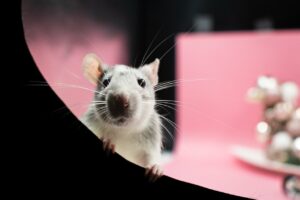
My first contact with behavior analysis was in 2014, in one of the most exciting environments for an undergraduate: the experimental analysis of behavior classes. I remember Prof. José César and Prof. Pedro Faleiros teaching me how to shape a rat’s lever-pressing behavior. Looking at those cumulative records was something that changed my perspective on how individual’s behavior can be studied and influenced. Seeing that animal’s behavior changing as a function of the ways I controlled the consequences for its responses made me think that I could conquer the world. Of course, I didn’t take too long to discover that it was not true—not long thereafter, I discovered that behavior analysts have problems even to persuade their own community members, never mind the rest of the world!
I remember the day I was discussing some implications of Skinner’s 1957 book with Prof. Cesar and asked him about any chance of doing some experiment with the rats. Unfortunately, the university had no opportunity for conducting experimental animal research. Prof. Cesar asked Prof. Faleiros about whether some guy called “Bento” was still conducting behavioral researcher at the dentistry university in my city. Of course, I was skeptical about an opportunity of doing research in the dentistry university; at that moment, I could not imagine what behavior would have to do with teeth—I had no idea that behavior analysis was something to be applied to any socially-relevant context. Nevertheless, I agreed to meet with “Bento” in the next day for a chat. Retrospectively, I believe that both Prof. Faleiros and Prof. Cesar taught me a very important concept: the more immediate the reinforcer, the greater its effect on behavior. Years later, Prof. Faleiros told me that it was unusual in that university for students to search for opportunities to do research; he was keen to wholeheartedly encourage me to follow this path right after I showed some degree of interest. In summary, I would say that a professor should be ready to plant the seed (a romantic way to write: increase the probability of students engagement in scientific research).
The next day I met Prof. Bento: Antonio Bento Alves de Moraes. He graduated in dentistry and worked with Dr. João Claudio Todorov during his doctorate. Despite his first graduation, he never self-affirmed as a dentist; after his doctorate, he graduated in psychology. Prof. Bento supervised me in my first research project. We were interested in investigating how behavior analysis was being applied in contexts related to individual or collective health. For this purpose, I reviewed 15 years of every published edition of the Journal of Applied Behavior Analysis (JABA) and selected all articles in which dependent variables were described as related in some level with individual or collective health (Marin et al., 2020). I was excited and engaged after each article I analyzed, making my first steps in behavior analysis, looking directly to the potential benefits it can produce in society.
I worked almost every day in Prof. Bento’s lab in the following years. We discussed each and every article I selected in our systematic review. Of course I missed the experimental work, but something I readily noticed was that behavior analysis is not reductionistic nor restricted to simple questions. Tobacco control, safety-belt using, feeding problems, challenging behavior, ergonomic postures at work, compliance to health treatments, exercising, obesity problems, and the list goes on. After some months working with him, I discovered some of Prof. Bento’s previous work. He had been interested in managing children’s’ behavior during dental interventions to increase compliance with treatment. Once more, I was taught that behavior analysis was not something I would just see with rats in the lab — I could apply it to (almost all) socially-relevant issues. I would consider that a good practice in tutoring new behavior analysts is to provide the opportunity to face behavior analysis not merely as a class in graduation course, but as it is: a science, a way to analyze the events in the world, a set of knowledge that can improve peoples’ quality of life. I just started to realize the importance of basic experimental research after being highly motivated by how behavior analysis can impact our daily lives.
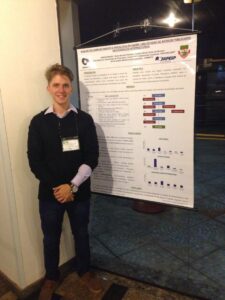
Working with Prof. Bento also gave me the opportunity to be exposed to one of the most reinforcing contingencies (in my opinion) in academia: conference presentations. In 2015 we presented a poster with the preliminary results of our first systematic review at a small conference. It was my first one; after that year I have participated in at least one conference every year. I remember some really influential behavior analysists coming to the poster to discuss it with me. I felt like a rockstar. People asking me about the methods, discussing my results, and commenting on the importance of my research. Specifically, they considered that reviewing the available studies could highlight the outcomes produced by behavior analysts within the society. I was just a little boy in a scientific conference; we need to be suspicious about how the compliments made in such circumstances are natural or artificial. Nevertheless, in both cases, the effect was clear: I was strongly motivated to keep working on my project after attending that conference. Today, I am certain that providing the opportunity for students to present their work to different people in different contexts, and contact good feedback on their activity, is a critical variable in the maintenance of academically-relevant behaviors. I always hear some of my lab colleagues looking forward to a conference, just to present their newest experiment.
I was almost graduated after four years working with Prof. Bento. At that moment, he advised me to keep my path in academia, and we started planning my next step — a master’s degree. In 2017, Prof. Bento and Prof. Faleiros encouraged me to participate in the Winter School at the Universidade Federal de São Carlos (UFSCar). This was a one-week event of lectures on Behavior Analysis, Culture and Symbolic Behavior organized by the Prof. Julio de Rose and his students. I went to the event with one objective: find out who would agree to supervise me in my post-graduation degree—more specifically, Prof. Bento suggested that I talk with Prof. Deisy das Graças de Souza, a professor in the same lab as Julio de Rose at the UFSCar.
One of the lectures I saw was given by Prof. João Henrique de Almeida. He presented an introduction to Relational Frame Theory. I remember his slides for Dougher et al.’s (1994) experiment. I went crazy for that study. At that moment, I was deeply interested in studying equivalence relations and transformation of function. My idea was to investigate whether abstract stimuli would elicit fear responses (measured through skin conductance) after being related to fearful dentist-related images. After Prof. de Almeida’s lecture I reached him and asked for a short talk. He was truly open. He was genuinely interested in what I had to say. At the end of our talk, he recommended that I try to do a masters degree with Prof. Deisy de Souza, and emphasized that he would be happy to help me write the project. In that moment I learned another fruitful lesson: sometimes you need to be open to new people with crazy experimental ideas. Creativity does not flower in contexts where people do not give opportunity to it. Prof. de Almeida, in just a fifteen-minute conversation helped to give me my next step. I was going to do my master’s at UFSCar and within the same day I spoke to Prof. de Souza and she agreed to supervise me.
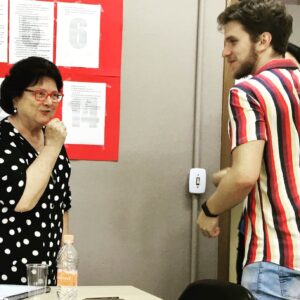
To cut a long story short: after six years at UFSCar I finished both my masters and doctorate under Prof. de Souza’s supervision. During both masters and doctoral projects, I explored the role of meaningful stimuli on the establishment of equivalence classes. In summary, the experiments have evidenced that stimuli considered as meaningful are likely members of equivalence classes established in our daily lives. The experiments showed a high consistency in how participants relate the meaningful stimuli used in those experiments, even though they were not exposed to any experimental teaching procedures to do so. Furthermore, the experiments showed that participants readily merged an experimentally-established equivalence class (involving abstract symbols) and a pre-experimentally-established equivalence class (involving meaningful images) if we taught them to relate one member of each class. I do not intend to expose my work more fully here, but rather to list some of the variables that I believe most influenced my behavior as a scientist during this period (but see Marin, 2024, for a complete explication of this work).
There were several meetings, seminars, classes in which I could learn important concepts, relevant to analytical methods, historical facts, precise experimental designs, etc. However, I consider that the richer contingencies were the ones in which I could respond to real challenges of academic life. Dealing with problems while collecting data, grappling with questions without a clear answer, bureaucratic work, going after grants and scholarships, writing articles, dealing with Reviewer 2, etc. For all these challenges, I could count on Prof. Deisy — or the helping hands of other researchers and friends.
With Prof. Deisy I learned to be resilient, to work hard, to be patient and, of course, to be under control of the data. But all of this learning was only possible because she trusted me while always remaining close enough to advise me. There were times that I did not follow her instructions, of course. Sometimes I was successful—and she was there to congratulate me—, sometimes I failed—and she was also there to help me to fix it. In any case, she was there, and this was a good lesson to me. A scientist needs freedom, at least in some degree—I am not doing a political speech. If we do not provide some degree of freedom, students will only be under the control of our instructions, and at some time, our instructions shall not be present anymore. Then, what would happen? They will search for other rules to follow, and the science will perish because at some moment there will be no more rule givers, only rule-followers. Furthermore, it also seems important to not confound freedom and negligence.
A last and more recent experience I want to share is about my time abroad. In 2019, I read a paper about Murray Sidman going to school (Brodsky & Fienup, 2018). It was about Equivalence-Based Instruction and how the equivalence paradigm could be used to teach academically relevant concepts. I was amused about that. At that time, I was working on a project called Reading League in which we used behavioral interventions and the equivalence paradigm to teach children to read and write. It was really close to what Julia Brodsky and Daniel Fienup were presenting in their paper. I was getting into a new world, back to the applied behavior analysis, but now on equivalence-based instructions. In 2023, I spent six months working with Dr. Fienup at the Teachers College, Columbia University. During my time there, I became obsessed with Fred S. Keller’s work; even more after learning about his visits to Brazil. In his autobiography (Keller, 2011), he talks about how he helped to build the field of behavior analysis in Brazil. Even though I had been aware of his influence in Brazilian behavior analysis, it was amazing to read about his experiences in his own words.
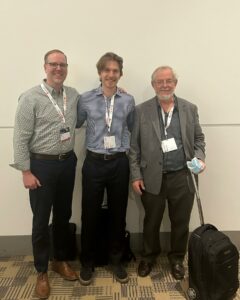
Beyond my obsession with Keller’s work, I also had the opportunity to learn more about the work of Dr. Fienup. It was a good time in which I developed a more independent way to look at my own research. Prof. Fienup gave me several opportunities to work out my creativity. Together, we developed different ways to analyze participants’ performance in equivalence studies. We started looking at cumulative record of correct responses in order to verify the acquisition rate of different conditional baseline relations or the derivation of untrained relations; we developed a dynamic way to present matching matrices for each block, and we tried to present it as a graphic interchange figure (GIF); we discussed different ways to present relational patterns in two-dimensional space (similar to the one proposed by Belisle & Dixon, 2020). Not every goal had a successful end, of course, but Dr. Fienup gave me all tools and space to try. Once more, the freedom to try allowed me to contact relevant and natural contingencies of reinforcement. His main role was providing me the opportunity and space to try, to be daring and bold, to experiment. Spending a time at Columbia was, indeed, a wonderful experience to take a deep look at my future in behavior analysis. What do I want to research in the next years? Where do I want to work in the future? How do I want to contribute to the development of the behavior analysis?
After coming back to Brazil, I was approved as a temporary professor at the Universidade Paulista (UNESP), in Bauru (in the state of Sao Paulo). I was invited by Prof. João de Almeida, the same professor I met at the UFSCar winter school that helped me to get into the masters program all those years ago. It was one of the best experiences I have ever had—teaching about basic principles in behavior analysis. In those classes I reviewed my path as a student of behavior analysis. However, at that moment I was not only a student—I will always see myself as a student—I was also a teacher; that is, someone that can also stimulate students to think scientifically, to critically see the world around, to come up with new questions, to be bold and propose new studies. All of that could be summarized, in my opinion, as: to be a scientist. During my classes, I remembered my early steps into behavior analysis, and I tried to replicate all of those contingencies that positively affected my behavior. I am told that students commented to Prof. de Almeida something about missing my classes. At least they will not say that behavior analysis is reductionist or mechanistic!
Reflecting on my steps during the last decade, I can be certain that Keller’s words were very precise. There is more to providing the right contingencies of reinforcement for establishing academic-relevant behaviors, than any personal trait or individual fate for success. In my opinion, other experiences would have led me in different directions. I don’t believe that the way I lived my life is the only way to get somewhere, but I cannot deny that I am happy being a researcher in behavioral science—this was my way. I consider that reviewing our cultural practices inside the field of behavior analysis, promoting a better environment for developing new students, and encouraging new ideas, can be, at least, some of the ways to promote the future of our science.
References
Belisle, J., & Dixon, M. R. (2020). Relational density theory: Nonlinearity of equivalence relating examined through higher-order volumetric-mass-density. Perspectives on Behavior Science, 43, 259-283.
Brodsky, J., & Fienup, D. M. (2018). Sidman goes to college: A meta-analysis of equivalence-based instruction in higher education. Perspectives on Behavior Science, 41, 95-119.
Dougher, M. J., Augustson, E., Markham, M. R., Greenway, D. E., & Wulfert, E. (1994). The transfer of respondent eliciting and extinction functions through stimulus equivalence classes. Journal of the Experimental Analysis of Behavior, 62(3), 331-351.
Keller, F. S. (2009). At my own pace: The autobiography of Fred S. Keller. Sloan Publishing.
Marin, R. (2024). Investigações sobre estímulos com significado e formação de classes de equivalência. Tese de Doutorado. Universidade Federal de São Carlos, Brasil.
Marin, R., Ayres‐Pereira, V., & das Graças de Souza, D. (2022). Merger and expansion of equivalence classes via meaningful stimuli. Journal of the Experimental Analysis of Behavior, 117(1), 69-90.
Marin, R., Faleiros, P. B., & Moraes, A. B. A. D. (2020). Como a análise do comportamento tem contribuído para área da saúde? Psicologia: Ciência e Profissão, 40, 1-13.
